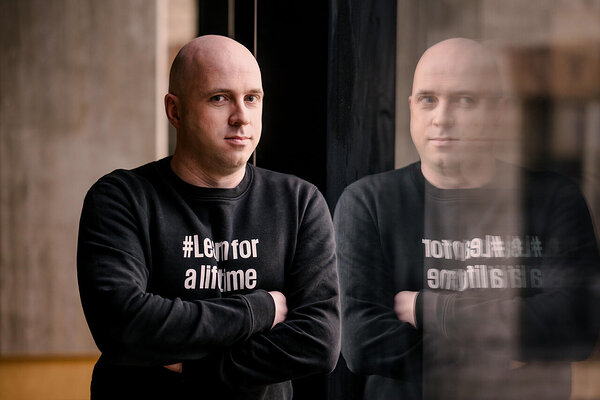KPMG: artificial intelligence cannot replace a doctor
Kukk admits that there are many tasks that a computer can perform better than a human can and that could be entrusted to artificial intelligence. “Very large volumes of data can be processed or analysed many times faster by a computer than by a doctor,” he said. Thus, with the support of AI, doctors could make significantly better treatment decisions and make them much faster than before.
The amount and quality of data are growing at a staggering pace, but to be able to use the data smartly, it is necessary to invest in both software and hardware. However, the systemic underfunding of healthcare in Estonia hampers progress. “Indeed, it is often the case that we complete a development project for an application such as the Patient Portal, for example, but there is no money planned for the subsequent maintenance and security of the application or system,” Kukk said.
Systemic underfunding also makes healthcare institutions vulnerable to cyber security threats. “At some point, the integrity of the data may be compromised, which could result in a patient being accidentally administered a lethal dose of medication if, say, a nurse fails to double-check it,” Kukk said. Inadequate cyber security measures can also lead to the leakage of sensitive personal health data. “The integrity, availability and confidentiality of health data are all equally important and must be equally well protected.”
Due to an acute shortage of money in Estonia’s healthcare system, healthcare institutions are often forced to choose between hiring healthcare professionals and buying medical equipment or investing in IT solutions. “If doctors form the majority in the management team, the choice tends to be made in favour of the former, as people need to be treated in any case,” Kukk said. “As long as there is no change in the amount and allocation of funds, it is difficult to see how the situation can improve significantly.”
According to Kukk, the lack of money to maintain IT systems is a problem for the whole public sector in Estonia, not just healthcare. “Instead of large one-off investments, development should be continuous and comprehensive,” he added. “This means that if we are developing a large IT system, we must plan a certain amount of money for its maintenance in the next ten years so that we can upgrade and change it as and when necessary and ensure system security,” Kukk said. “What we are currently seeing, however, is that two or three million euros are invested in a development project, and then the system is expected to be up and running for the next ten years, but that is not the case, unfortunately.”
KPMG is a global network of firms providing audit, tax, legal and advisory services. KPMG member firms operate in 144 countries and territories and collectively employ more than 236,000 partners and people. In Estonia, KPMG has been operating since 1992 and currently employs more than 250 staff. Nearly 2,000 professionals work for KPMG Estonia’s partner firm KPMG Finland and almost 6,000 in KPMG member firms in other Nordic countries.
Latest articles

Why Purple Teaming is the Missing Link in Modern Cybersecurity
In today’s cybersecurity landscape, most organizations are caught between two realities: they kn..

Reflections from the Field - A Red Team’s Perspective on Cybersecurity in Estonia
Over the past several years, our red team has conducted extensive offensive security assessments..

KPMG Expert: AI Solutions for Automating Routine Processes Deliver the Quickest Returns
By implementing artificial intelligence, the quickest returns are achieved thro..

KPMG IT Expert: Practitioner-Trainers Make Training Engaging and Practical
IT or cyber security training is more engaging when delivered by trainers who a..

Your Partners’ Weaknesses Can Affect Your Own Security
When planning your cyber defence strategy, it’s crucial to recognise that vulne..

Bolstering Cyber Resilience with High-Quality Red Teaming
The escalating complexity and frequency of cyberattacks pose a critical risk to the stability of f..
Turn threats into opportunities
Provide a safe and sustainable business environment for your company. We help build a resilient and reliable digital landscape, even in the face of changing threats.


KPMG Baltics OÜ
+372 626 8700cyber@kpmg.ee
Ahtri 4, 10151 Tallinn, Estonia
Contact us
${i18n('ask_more')}
Analysis of employee awareness
Analysis of employee awareness focuses on mapping the skills and increasing the competencies of the weakest link in cyber security: the users, the employees.
${i18n('ask_more')}
Threat assessment
Threat assessment is a tactical and technical service that allows a company to get a quick overview of external threats.
${i18n('ask_more')}
Maturity assessment
Maturity assessment helps plan IT investments and design further steps to mitigate vulnerabilities and ensure better security.